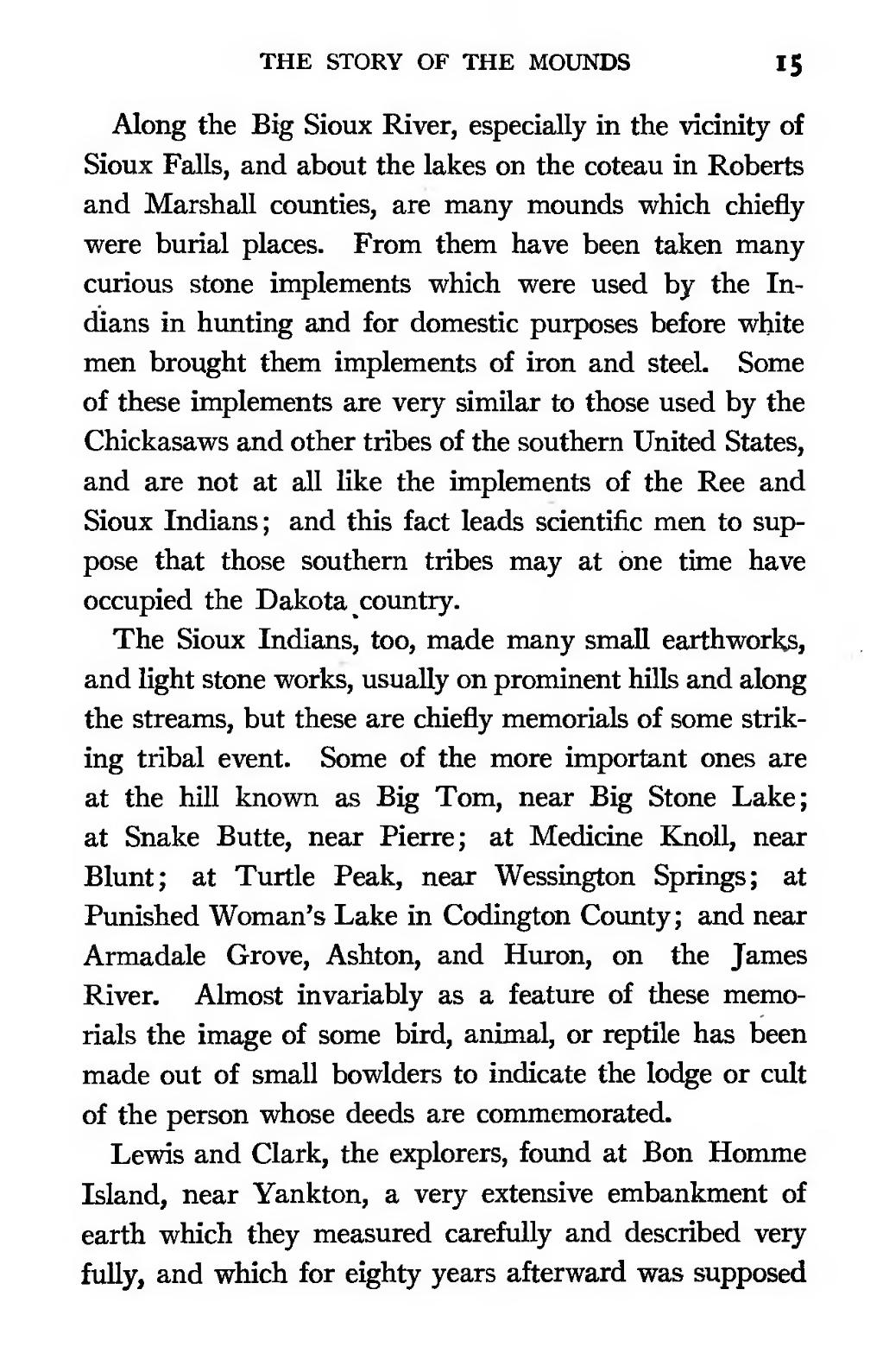Along the Big Sioux River, especially in the vicinity of Sioux Falls, and about the lakes on the coteau in Roberts and Marshall counties, are many mounds which chiefly were burial places. From them have been taken many curious stone implements which were used by the Indians in hunting and for domestic purposes before white men brought them implements of iron and steel. Some of these implements are very similar to those used by the Chickasaws and other tribes of the southern United States, and are not at all like the implements of the Ree and Sioux Indians; and this fact leads scientific men to suppose that those southern tribes may at one time have occupied the Dakota country.
The Sioux Indians, too, made many small earthworks, and light stone works, usually on prominent hills and along the streams, but these are chiefly memorials of some striking tribal event. Some of the more important ones are at the hill known as Big Tom, near Big Stone Lake; at Snake Butte, near Pierre; at Medicine Knoll, near Blunt; at Turtle Peak, near Wessington Springs; at Punished Woman's Lake in Codington County; and near Armadale Grove, Ashton, and Huron, on the James River. Almost invariably as a feature of these memorials the image of some bird, animal, or reptile has been made out of small bowlders to indicate the lodge or cult of the person whose deeds are commemorated.
Lewis and Clark, the explorers, found at Bon Homme Island, near Yankton, a very extensive embankment of earth which they measured carefully and described very fully, and which for eighty years afterward was supposed
